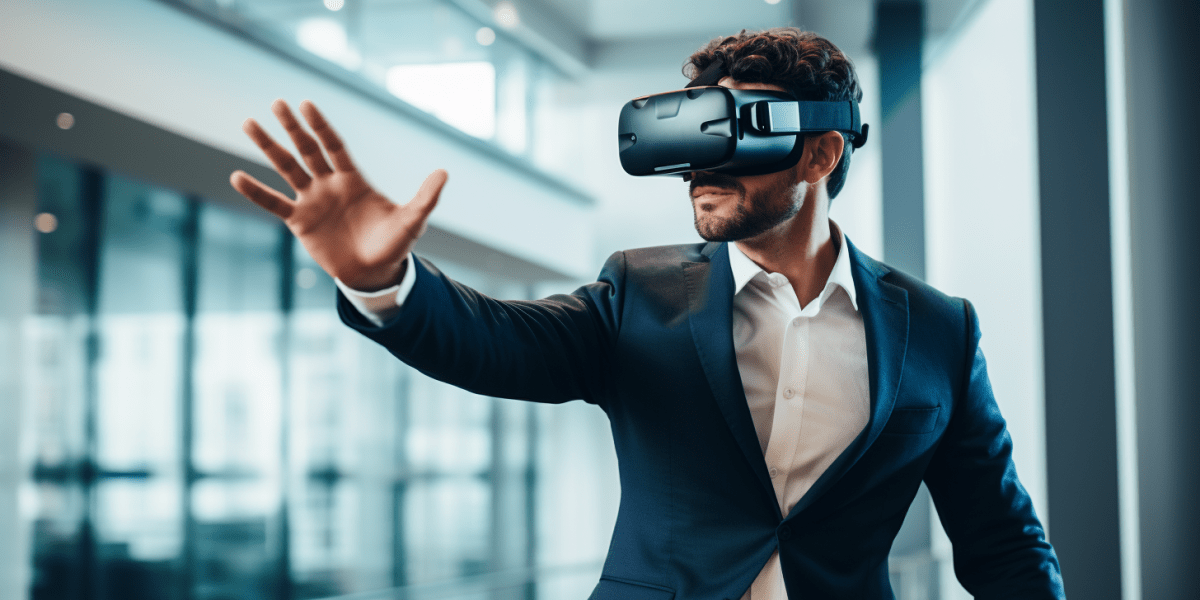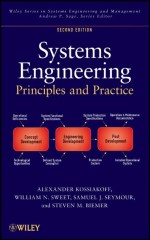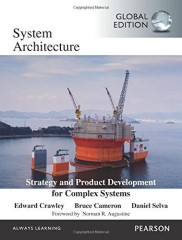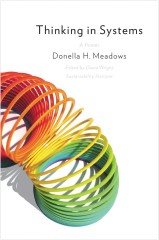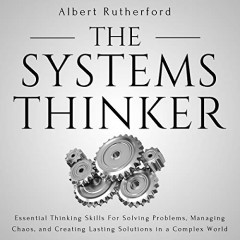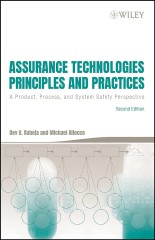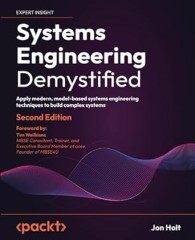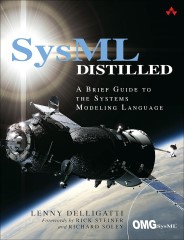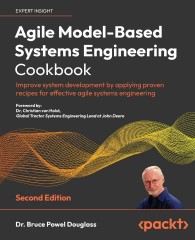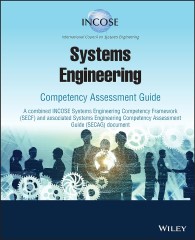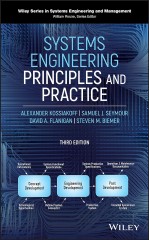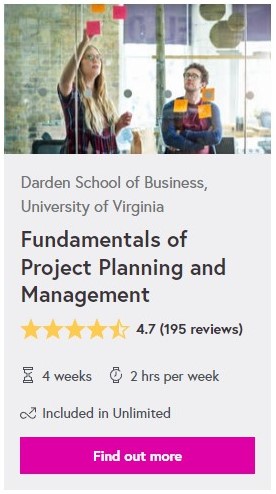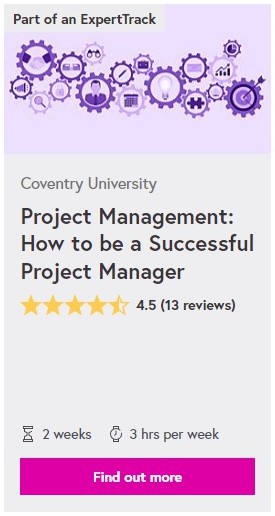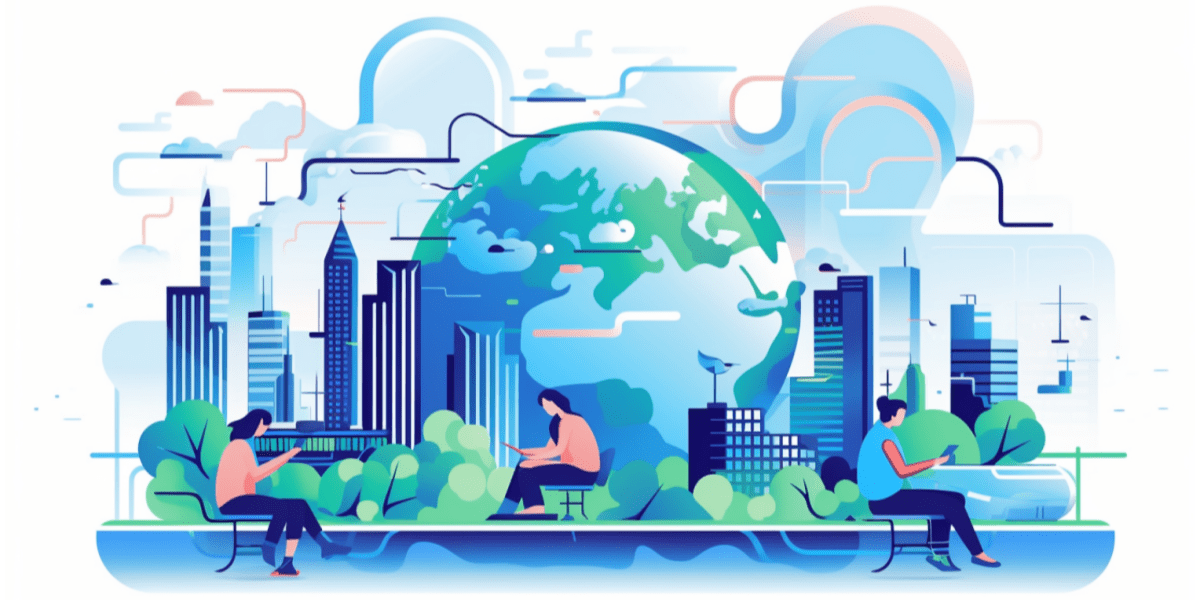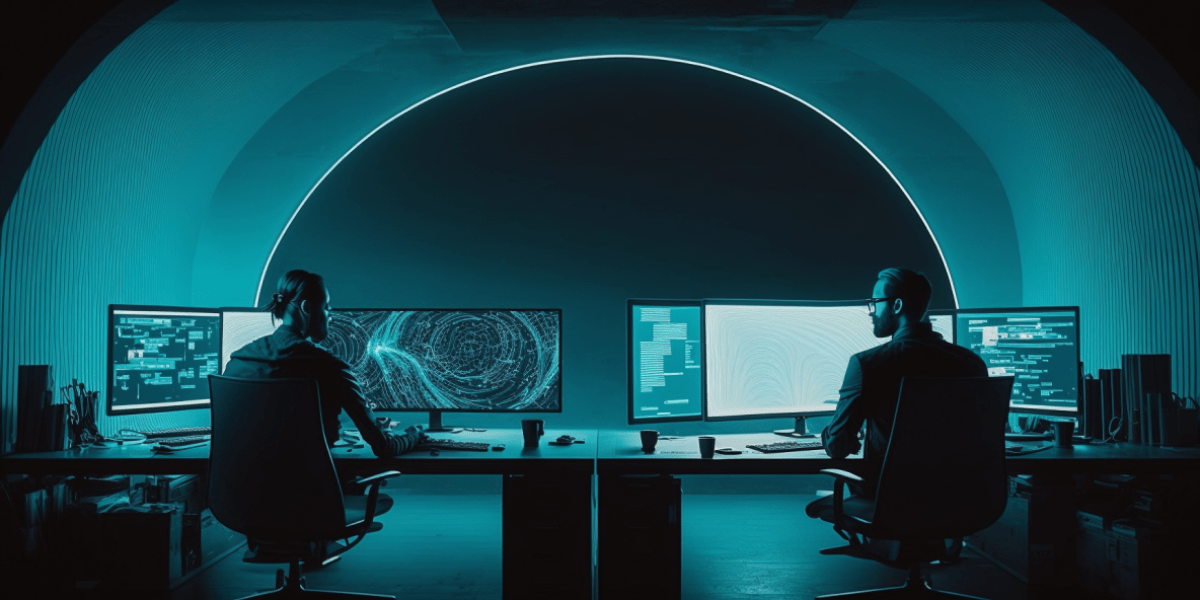In the ever-evolving landscape of systems engineering, a revolutionary technology is reshaping how we approach user test cases: Virtual Reality (VR). As we stand at the cusp of a new era in system design and evaluation, VR is emerging as a powerful tool that promises to transform the way we conceptualize, develop, and validate complex systems.
User test cases have long been the cornerstone of effective systems engineering, providing crucial insights into how end-users interact with and experience a system. They serve as a bridge between theoretical design and practical application, often uncovering unforeseen challenges and opportunities. However, traditional methods of conducting user test cases have their limitations – they can be time-consuming, costly, and sometimes fail to capture the full spectrum of potential user interactions.
Enter Virtual Reality. By creating immersive, interactive environments that simulate real-world conditions with unprecedented fidelity, VR is opening up new possibilities for user testing that were once thought impossible. It’s not just about enhanced visualization; VR allows systems engineers to create and manipulate scenarios that would be impractical, dangerous, or prohibitively expensive to replicate in the physical world.
Imagine testing the user interface of a next-generation aircraft cockpit without leaving the ground, or evaluating the ergonomics of a factory floor layout before a single piece of equipment is installed. These are just glimpses of what VR brings to the table in systems engineering.
But the potential of VR in user test cases goes beyond mere simulation. It’s about creating a new paradigm for user interaction, one that blurs the lines between the virtual and the real, offering insights that can lead to more intuitive, efficient, and user-centric systems. As we delve deeper into this topic, we’ll explore how VR is not just enhancing existing practices in systems engineering, but fundamentally changing the way we think about user testing and system design.
In the following sections, we’ll trace the evolution of VR in systems engineering, examine its myriad benefits, look at real-world applications, and consider the challenges and ethical implications of this technology. We’ll also peer into the future, considering emerging trends and the skills that tomorrow’s systems engineers will need to harness the full potential of VR.
As we embark on this exploration, one thing is clear: Virtual Reality is not just a tool, but a gateway to a new frontier in systems engineering. It’s time to step into this virtual world and discover the very real impact it’s having on how we design, test, and implement the systems that shape our world.
Recommended Further Reading Amazon BooksTable of Contents
- 1. The Evolution of VR in Systems Engineering
- 2. Transforming Test Case Development with VR
- 3. Benefits of VR in User Test Cases
- 4. Real-world Applications
- 5. Ethical Considerations and AI Integration
- 6. Multi-sensory Integration in VR Testing
- 7. Challenges in Implementing VR for User Test Cases
- 8. Future Prospects and Emerging Trends
- 9. Conclusion
1. The Evolution of VR in Systems Engineering
The journey of Virtual Reality (VR) in systems engineering is a testament to the rapid pace of technological advancement and the innovative spirit of the engineering community. To understand its current impact, we must first trace its evolution from a niche technology to an indispensable tool in the systems engineer’s arsenal.
VR’s roots can be traced back to the 1960s, with early experiments in computer-generated simulations. However, it wasn’t until the late 1980s and early 1990s that VR began to show promise for engineering applications. Initially, the technology was limited by high costs, low resolution, and computational constraints, restricting its use to specialized military and aerospace projects.
The turn of the millennium marked a significant shift. As computing power increased and costs decreased, VR systems became more accessible to a broader range of industries. Early adopters in automotive and manufacturing sectors began experimenting with VR for design visualization and basic simulations. Yet, these early applications were still far from the immersive, interactive environments we see today.
The real breakthrough for VR in systems engineering came in the 2010s. The introduction of consumer-grade VR headsets, coupled with advances in graphics processing and motion tracking, dramatically expanded the possibilities for VR applications. Systems engineers could now create and interact with virtual prototypes in ways that closely mimicked real-world interactions.
This period also saw the integration of VR with other emerging technologies. The combination of VR with data analytics, artificial intelligence, and the Internet of Things (IoT) opened up new avenues for comprehensive system testing and simulation. Engineers could now not only visualize systems but also simulate complex interactions and gather rich data on user behavior and system performance.
By 2020, VR had become a mainstream tool in many areas of systems engineering. From aerospace companies using VR to design and test aircraft interiors, to manufacturing firms optimizing factory layouts, the technology had proven its worth across diverse applications. The COVID-19 pandemic further accelerated VR adoption, as remote work necessitated new ways of collaborating on complex engineering projects.
Today, in 2024, VR is an integral part of the systems engineering process in many industries. It’s used not just for visualization and testing, but as a collaborative platform where engineers, designers, and end-users can interact with virtual systems in real-time. The technology has matured to a point where the lines between physical and virtual prototyping are increasingly blurred.
| Year/Period | Milestone |
|---|---|
| 1960s | Early experiments in computer-generated simulations |
| 1980s-1990s | VR begins to show promise for specialized engineering applications (military, aerospace) |
| Early 2000s | Increased computing power makes VR more accessible; early adoption in automotive and manufacturing |
| 2010-2015 | Introduction of consumer-grade VR headsets; expansion of VR applications in systems engineering |
| 2015-2020 | Integration of VR with data analytics, AI, and IoT; VR becomes mainstream in many engineering fields |
| 2020 | COVID-19 pandemic accelerates VR adoption for remote collaboration |
| 2024 (Present) | VR is an integral part of systems engineering, used for design, testing, and collaboration across industries |
Modern VR systems used in engineering boast high-resolution displays, precise motion tracking, and haptic feedback systems that can simulate the feel of interacting with physical objects. Cloud-based VR platforms allow for seamless collaboration across global teams, while AI-driven simulations can generate and test thousands of scenarios in virtual environments.
As we look at the current state of VR in systems engineering, it’s clear that we’ve come a long way from the rudimentary simulations of decades past. VR has evolved from a novelty to a necessity, fundamentally changing how we approach system design, testing, and user interaction. And yet, as we’ll explore in the following sections, the evolution of VR in systems engineering is far from over. We stand on the brink of even more transformative developments that promise to reshape the field in ways we’re only beginning to imagine.
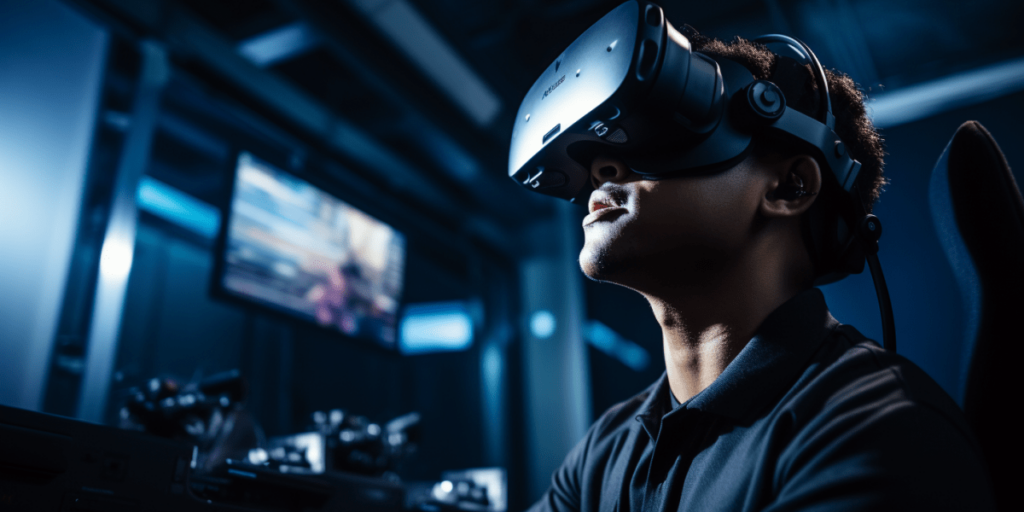
2. Transforming Test Case Development with VR
The integration of Virtual Reality into systems engineering is not just changing how we execute test cases; it’s revolutionizing how we conceptualize and develop them. Traditional test case development often relies on hypothetical scenarios and limited user perspectives. VR introduces a paradigm shift, allowing engineers to craft more comprehensive, realistic, and user-centric test cases.
VR enables systems engineers to:
- Immerse themselves in the user’s environment, leading to more empathetic and contextually relevant test cases.
- Visualize complex systems and their interactions in three-dimensional space, uncovering potential issues that might be overlooked in 2D representations.
- Rapidly prototype and iterate test scenarios, reducing the time and cost associated with physical prototyping.
- Simulate extreme or rare conditions that would be difficult or dangerous to replicate in the real world.
- Collaborate in shared virtual spaces, allowing geographically dispersed teams to co-create test cases.
However, this transformation also brings challenges. How do we ensure that VR-developed test cases translate effectively to real-world scenarios? Are we at risk of overlooking critical physical factors that may not be accurately represented in virtual environments?
As we look to the future, the potential of VR in test case development is both exciting and daunting. Let’s explore how VR can support and enhance test case development in the years to come:
| Aspect of Test Case Development | Current VR Capabilities | Future Potential | Challenges to Address |
|---|---|---|---|
| User Scenario Simulation | Basic immersive environments with limited sensory feedback | Fully immersive, multi-sensory environments that accurately replicate real-world conditions | Ensuring VR doesn’t introduce biases or oversimplifications |
| System Interaction Modeling | 3D visualization of system components and basic interactions | AI-driven predictive modeling of complex system interactions and emergent behaviors | Validating the accuracy of AI predictions in virtual environments |
| Edge Case Identification | Manual creation of extreme scenarios | Automated generation of edge cases using machine learning algorithms | Balancing AI-generated scenarios with human intuition and experience |
| Collaborative Development | Shared virtual spaces for remote collaboration | Global, real-time co-creation with haptic feedback and AI assistants | Maintaining effective communication and workflow in virtual spaces |
| Accessibility Testing | Basic simulation of different user abilities | Highly accurate replication of diverse physical and cognitive conditions | Ensuring ethical treatment and accurate representation of accessibility needs |
| Performance Benchmarking | Virtual measurement of basic performance metrics | Real-time, comprehensive performance analysis with predictive modeling | Correlating virtual performance metrics with real-world outcomes |
| Test Data Generation | Manual input and basic procedural generation | AI-driven generation of vast, realistic datasets reflecting diverse user behaviors | Ensuring generated data accurately represents real-world variability |
| Regulatory Compliance Testing | Simulation of standard compliance scenarios | Automated, continually updated compliance testing based on global regulatory changes | Keeping virtual testing environments up-to-date with rapidly evolving regulations |
| User Experience Evaluation | Basic user feedback collection in VR | Advanced biometric and neurological feedback analysis for deep UX insights | Balancing quantitative VR data with qualitative human experience |
| Long-term Usage Simulation | Limited simulation of system aging and wear | Accelerated virtual aging simulations accounting for various usage patterns and environments | Validating the accuracy of long-term predictions made in compressed VR timescales |
This table illustrates the transformative potential of VR in test case development while also highlighting the challenges that must be addressed. As we move forward, the key will be to harness the power of VR and complementary technologies like AI, while remaining grounded in the physical realities of the systems we’re designing and testing. The future of test case development in VR promises to be more comprehensive, efficient, and insightful than ever before – but it will require ongoing innovation, validation, and ethical consideration to fully realize its potential.
Recommended Further Reading Amazon Books3. Benefits of VR in User Test Cases
The integration of Virtual Reality into user test cases has brought about a paradigm shift in systems engineering, offering a multitude of benefits that are revolutionizing the way we design, test, and implement complex systems. Let’s explore the key advantages that VR brings to the table:
Enhanced Realism and Immersion
One of the most significant benefits of VR in user test cases is the unprecedented level of realism and immersion it provides. VR environments can simulate real-world conditions with remarkable fidelity, allowing users to interact with virtual prototypes as if they were physical objects. This level of immersion enables systems engineers to:
- Observe natural user behaviors and reactions in a controlled environment
- Identify usability issues that might not be apparent in traditional 2D simulations
- Evaluate ergonomics and user comfort in a more accurate context
For example, in aerospace engineering, VR allows test pilots to experience and interact with cockpit layouts long before a physical prototype is built, leading to more intuitive and efficient designs.
Cost and Time Savings
VR significantly reduces the need for physical prototypes, resulting in substantial cost and time savings:
- Rapid iteration: Changes can be implemented and tested quickly in the virtual environment
- Reduced material waste: Fewer physical prototypes mean less material consumption
- Accelerated development cycles: VR testing can be conducted in parallel with other development processes
A case study from the automotive industry showed that one major manufacturer reduced design time by 30% and cut prototype costs by 65% after implementing VR in their user testing process.
Improved Safety for High-Risk Scenarios
VR allows for the simulation of dangerous or high-risk scenarios without putting users in actual danger:
- Training for emergency situations in power plants or oil rigs
- Testing user interfaces for critical systems like air traffic control
- Evaluating evacuation procedures in buildings or vehicles
This capability not only enhances safety but also allows for more thorough testing of systems under extreme conditions that would be impractical or unethical to replicate in the real world.
Increased Flexibility and Control
VR environments offer unparalleled flexibility and control over test parameters:
- Easy manipulation of environmental conditions (lighting, weather, time of day)
- Simulation of various user profiles and behaviors
- Ability to replicate rare or specific scenarios on demand
For instance, automotive engineers can test a vehicle’s user interface under a wide range of driving conditions, from clear sunny days to heavy snowstorms, all within the same testing session.
Data Collection and Analysis
VR test cases generate rich, multidimensional data that can provide deeper insights into user behavior and system performance:
- Precise tracking of user movements and interactions
- Heat maps of user attention and focus
- Detailed logs of user decision-making processes
This wealth of data allows for more comprehensive analysis and can uncover subtle usability issues or optimization opportunities that might be missed in traditional testing methods.
Global Collaboration
VR enables seamless collaboration among geographically dispersed teams:
- Shared virtual environments for real-time design reviews
- Remote user testing with participants from diverse locations
- Consistent testing environments across multiple sites
This global collaboration capability not only reduces travel costs but also allows for more diverse user input in the testing process.
In conclusion, the benefits of VR in user test cases are transforming systems engineering from a primarily physical discipline to one that seamlessly blends virtual and real-world methodologies. As we’ll explore in the next sections, these advantages are already being leveraged across various industries, opening up new possibilities for innovation and efficiency in system design and implementation.
4. Real-world Applications
The integration of Virtual Reality (VR) in systems engineering isn’t merely theoretical; it’s actively reshaping industries and redefining best practices. Let’s examine how various sectors are leveraging VR for user test cases, and consider the implications of these applications.
Aerospace: Pushing the Boundaries of Safety and Efficiency In the aerospace industry, where errors can have catastrophic consequences, VR is proving invaluable. Boeing, for instance, uses VR to test cockpit layouts and passenger cabin designs. This approach allows them to iterate rapidly without the need for costly physical mockups. But does this virtual testing truly capture the nuances of real-world interactions? While it offers unprecedented flexibility, we must question whether VR can fully replicate the stress and environmental factors pilots face in actual flight situations.
Automotive: Driving Innovation in Design and Safety Automotive manufacturers like Ford and Volkswagen have embraced VR for everything from ergonomic assessments to crash simulations. VR enables designers to experience vehicles from a user’s perspective, leading to more intuitive interfaces and comfortable interiors. However, as we rely more on virtual testing, are we at risk of overlooking tactile elements that can only be fully appreciated in physical prototypes? The challenge lies in striking a balance between virtual efficiency and real-world validation.
Healthcare: Virtual Training for Real-life Scenarios In healthcare, VR is revolutionizing how medical professionals train for complex procedures. Surgeons can practice intricate operations in virtual environments, reducing risks to patients. Yet, we must consider: Can the stakes of a real surgery ever be fully replicated in a virtual space? The emotional and physical pressures of an actual operating room pose unique challenges that VR may struggle to emulate.
Manufacturing: Optimizing Processes Before Implementation Manufacturing firms are using VR to design and test production lines before physical implementation. This approach minimizes downtime and optimizes workflows. But as we increasingly rely on virtual simulations, are we potentially overlooking real-world variables that could impact production? The key lies in developing VR systems that can account for the unpredictability of human behavior and machine variability in actual factory settings.
Cross-industry Potential: Breaking Down Silos Perhaps the most intriguing aspect of VR in systems engineering is its potential for cross-pollination of ideas. Techniques developed for aerospace simulations could inform safer automotive designs, or healthcare VR training methods could enhance safety protocols in manufacturing. This cross-industry application raises an important question: How can we foster environments where knowledge sharing becomes the norm rather than the exception?
5. Ethical Considerations and AI Integration
As VR becomes more prevalent in systems engineering, particularly when integrated with AI, we face a new frontier of ethical considerations that demand our attention.
Bias in Virtual Environments: A Reflection of Reality? VR environments, like any human creation, can inadvertently incorporate biases. When these virtual spaces are used for user testing, there’s a risk of perpetuating or even amplifying existing biases. For instance, if a VR simulation of a public space doesn’t accurately represent the diversity of potential users, it could lead to designs that are exclusionary. How can we ensure that our virtual test environments are truly representative and inclusive?
Data Privacy and Consent in Immersive Experiences VR user testing generates vast amounts of data, including detailed behavioral and physiological information. This raises critical questions about data privacy and informed consent. When a user enters a virtual environment for testing, are they fully aware of the extent of data being collected? How can we balance the need for comprehensive testing data with individual privacy rights?
AI Integration: Enhancing or Replacing Human Judgment? The integration of AI in VR testing environments offers the potential for more dynamic, responsive scenarios. AI can adapt test conditions based on user behavior, potentially uncovering insights that might be missed in static environments. However, this raises concerns about the role of human judgment in the testing process. As AI becomes more sophisticated, how do we ensure that human expertise and intuition remain central to the interpretation of test results?
Ethical Implications of Hyper-Realistic Simulations As VR technology advances, simulations are becoming increasingly indistinguishable from reality. This capability, while powerful for testing, raises ethical questions about the psychological impact on test subjects. For instance, in testing emergency response systems, how do we balance the need for realistic scenarios with the potential for causing undue stress or trauma to participants?
Responsibility and Accountability in Virtual Testing When systems tested primarily in VR environments are implemented in the real world and fail, questions of responsibility and accountability arise. If a system performs differently in reality than in VR tests, who bears the responsibility? This blurring of lines between virtual and real-world performance challenges our traditional notions of liability and due diligence in systems engineering.
Democratization vs. Technological Divide While VR has the potential to democratize the testing process by allowing remote participation and reducing costs, it also risks creating a technological divide. Organizations with access to advanced VR systems may gain a significant advantage in system development and testing. How can we ensure that the benefits of VR in systems engineering are accessible to a wide range of organizations and not just tech giants?
As we navigate these ethical considerations, it becomes clear that the integration of VR and AI in systems engineering is not just a technological challenge, but a societal one. It demands a multidisciplinary approach, bringing together technologists, ethicists, policymakers, and end-users to create frameworks that harness the power of these technologies while safeguarding human values and rights.
Certainly. I’ll continue with the remaining sections in the same thought-provoking and objective style.
6. Multi-sensory Integration in VR Testing
As we push the boundaries of VR in systems engineering, the integration of multi-sensory feedback emerges as a critical frontier. But does more sensory input necessarily translate to better testing outcomes?
Haptic Feedback: Touching the Virtual
Haptic technology allows users to ‘feel’ virtual objects, adding a tactile dimension to VR experiences. In systems engineering, this could mean testing the ergonomics of a control panel or the texture of a product surface. But can artificial haptic feedback truly replicate the nuanced sensations of real-world interactions? We must consider the potential for haptic feedback to mislead users or create false expectations about physical products.
Audio Integration: The Overlooked Sensory Channel
While visual aspects of VR often take center stage, audio plays a crucial role in creating immersive environments. From testing the acoustic properties of a vehicle interior to simulating the auditory alerts in a factory setting, sound integration in VR can significantly enhance test fidelity. However, we must question: How do we account for the variability in individual auditory perception when designing these tests?
Olfactory Simulation: The Final Frontier?
Some cutting-edge VR systems are beginning to incorporate smell, opening new possibilities for testing environments where odor is a critical factor. This could revolutionize testing for industries like food production or chemical manufacturing. But as we venture into olfactory simulation, we must grapple with the highly subjective nature of smell perception. Can a standardized approach to olfactory VR testing be developed, or will this always remain a niche application?
Sensory Overload vs. Focused Testing
As we integrate more sensory inputs into VR testing environments, we risk overwhelming users with information. This sensory overload could potentially skew test results or distract from the core elements being evaluated. How do we strike the right balance between comprehensive sensory simulation and focused, effective testing?
Recommended Future Learn Short Courses7. Challenges in Implementing VR for User Test Cases
While the potential of VR in systems engineering is vast, its implementation is not without significant hurdles. Understanding these challenges is crucial for developing realistic strategies for VR adoption.
Technical Limitations: The Gap Between Vision and Reality
Current VR technology, while advanced, still faces limitations in areas like resolution, field of view, and latency. These constraints can impact the fidelity of simulations and potentially lead to inaccurate test results. As we rely more heavily on VR for critical systems testing, how do we account for these technological shortcomings? Furthermore, how do we ensure that advancements in VR technology are quickly incorporated into testing methodologies?
Cost Considerations: Balancing Investment and Return
Implementing VR systems for user testing requires significant upfront investment in hardware, software, and training. For many organizations, particularly smaller ones, this cost can be prohibitive. How can we make VR testing more accessible without compromising on quality? Is there a role for shared resources or cloud-based VR testing platforms to democratize access to this technology?
Training and Skill Gap: Preparing the Workforce
Effective use of VR in systems engineering requires a unique skill set that blends traditional engineering knowledge with VR expertise. This creates a potential skill gap in the industry. How can educational institutions and companies collaborate to develop curricula that prepare the next generation of systems engineers for VR-integrated workflows? Moreover, how do we address the potential resistance to change among established professionals?
Integration with Existing Systems: The Interoperability Challenge
Many organizations have invested heavily in existing testing and simulation tools. Integrating VR into these established workflows presents technical and procedural challenges. How can we ensure smooth interoperability between VR systems and traditional engineering tools? Is there a risk of creating information silos or inconsistencies between VR and non-VR testing results?
| Challenge | Current Mitigation | Future Actions |
|---|---|---|
| Technical Limitations (e.g., resolution, field of view, latency) | – Use the highest-quality VR hardware available – Implement software optimizations to reduce latency – Clearly communicate limitations to stakeholders | – Invest in R&D for improved VR hardware – Develop adaptive rendering techniques – Explore integration with other technologies (e.g., eye-tracking) to enhance realism |
| High Implementation Costs | – Start with small-scale pilot projects – Utilize cloud-based VR solutions to reduce hardware costs – Share VR resources across departments | – Develop industry standards for VR testing to reduce custom development costs – Create consortiums for shared VR testing facilities – Lobby for government incentives for VR adoption in critical industries |
| Training and Skill Gap | – Provide comprehensive training programs for existing staff – Partner with VR specialists for initial implementation – Develop internal VR champions | – Collaborate with universities to develop VR-focused engineering curricula – Create industry-wide VR certification programs – Establish mentorship programs pairing VR experts with traditional engineers |
| Integration with Existing Systems | – Use middleware solutions for data translation between VR and existing systems – Implement phased integration approach – Maintain parallel testing processes during transition | – Develop open standards for VR data interoperability – Create AI-driven tools for automatic integration of legacy data into VR environments – Design next-gen engineering tools with VR integration as a core feature |
| Data Management and Security | – Implement robust data encryption for VR systems – Establish clear data handling and privacy policies – Use local processing where possible to minimize data transfer | – Develop VR-specific security protocols – Create industry standards for VR data privacy – Invest in secure, high-bandwidth network infrastructure for VR data transmission |
| User Acceptance and Adaptation | – Involve end-users in VR system design process – Provide gradual exposure to VR testing environments – Highlight tangible benefits of VR testing to users | – Conduct long-term studies on VR usage in professional settings – Develop more intuitive and user-friendly VR interfaces – Create best practices for ergonomic VR use in workplace settings |
| Validation of VR Test Results | – Conduct parallel physical and VR testing for critical systems – Develop comprehensive VR test validation protocols – Clearly document limitations of VR testing | – Create industry standards for VR test result validation – Develop AI systems to cross-reference VR and physical test results – Establish regulatory frameworks for VR testing in critical industries |
8. Future Prospects and Emerging Trends
As we look to the horizon, several trends are poised to shape the future of VR in systems engineering. But with each advancement comes new questions and challenges.
5G and Edge Computing: Enhancing VR Capabilities
The rollout of 5G networks and advancements in edge computing promise to address some of VR’s current limitations, enabling more responsive and detailed virtual environments. But as we increase our reliance on these technologies, how do we ensure the security and reliability of VR testing systems? Will the benefits of these technologies be evenly distributed, or will they exacerbate existing digital divides?
AI-Driven Adaptive Testing Environments
Machine learning algorithms could create VR test scenarios that adapt in real-time to user behavior, potentially uncovering edge cases and unforeseen interactions. However, this raises questions about the transparency and explicability of test results. If an AI system identifies a potential flaw, how can engineers trace the logic behind this discovery?
Quantum Computing: A New Paradigm for Simulation
Quantum computing has the potential to revolutionize the complexity and scale of simulations possible in VR. This could allow for testing of incredibly complex systems with countless variables. But as we approach this new frontier, how do we validate the accuracy of quantum-powered simulations? Are we prepared for the ethical implications of having such powerful predictive capabilities?
Changing Skill Requirements: The Evolution of Systems Engineering
As VR becomes more integral to systems engineering, the skills required of professionals in the field will evolve. Expertise in areas like VR design, data analytics, and human-computer interaction may become as crucial as traditional engineering skills. How will this shift impact the engineering workforce? What strategies can be employed to ensure a smooth transition and prevent a widening skills gap?
9. Conclusion
As we stand at this juncture in the evolution of systems engineering, VR presents both unprecedented opportunities and complex challenges. Its potential to revolutionize user test cases is clear, offering enhanced realism, cost savings, and new frontiers in system design and evaluation.
Yet, as we embrace this technology, we must remain vigilant. The ethical considerations, from data privacy to the potential for bias in virtual environments, demand our attention. The technical challenges, while surmountable, require continued innovation and investment.
The future of VR in systems engineering will be shaped not just by technological advancements, but by how we choose to implement and regulate these powerful tools. As systems engineers, it is our responsibility to harness the potential of VR while safeguarding the principles of safety, equity, and ethical design that are fundamental to our profession.
As we move forward, let us approach this new frontier with a balance of enthusiasm and critical thinking. The questions raised in this article are not merely academic – they will shape the systems we design, the products we create, and ultimately, the world we build.
The revolution in user test cases brought about by VR is not just about technology – it’s about reimagining the very process of how we understand, interact with, and improve the systems that underpin our modern world. As we continue to explore and expand the capabilities of VR in systems engineering, we must remain committed to leveraging this powerful tool in service of creating better, safer, and more user-centric systems for all.

